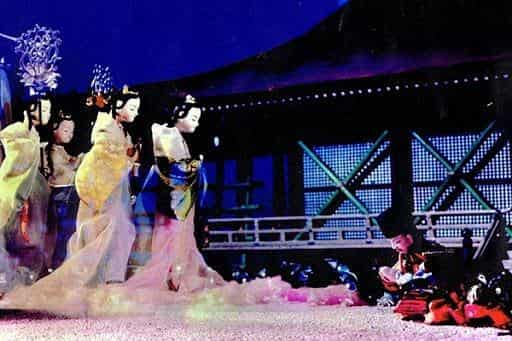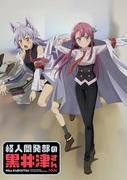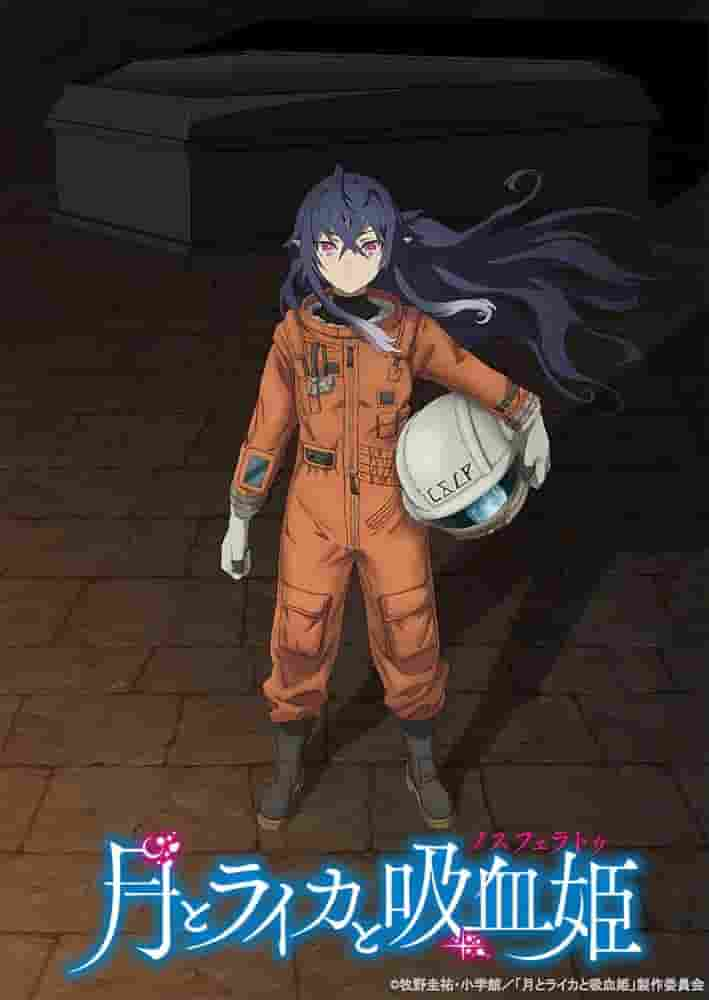Review of "Nobara": A fusion of beautiful nature and profound human drama

"Nobara": A masterpiece animation depicting the beauty of pottery and the sorrow of war■Overview of the work"Nobara" is a Japanese animated film released in 1977. It is based on the novel of the same name by fairy tale author Mimei Ogawa, and was made into an animated film using ceramic dolls. The film depicts the conflicting themes of peace and war through the beautiful world of ceramics. It was released in theaters, distributed by Kyoiku Eiga Haikyusha, and produced by Tokyo Chuo Production. It succeeds in conveying a profound message in a short 19-minute film with only one episode. ■ StoryThe setting of "Nobara" is two peaceful neighboring countries, a large one and a small one. One soldier is sent from each country to guard the stone monument that marks the border. The soldier from the large country is an old man, and the soldier from the small country is a young man. The two gradually become friendly with each other and start to enjoy playing shogi (Japanese chess). However, their peaceful days come to an end when the two countries start a war. This story depicts the tragedies that war brings and the preciousness of human bonds. ■Explanation"Nobara" is based on the novel of the same name by Mimei Ogawa. It is produced in a unique style of animation using ceramic dolls, and not only the characters but also the props and backgrounds are all made of ceramic. The beauty of this ceramic gives the whole work a unique charm. It has also received high acclaim, winning the Leonid Mogyi Award at the International Red Cross Film Festival held in Bulgaria in 1979. By contrasting the beauty of ceramics with the sorrow of war, it is a work that has a strong visual and emotional impact. ■CastThe reading is by Nanao Reiko. Her gentle voice, combined with the beauty of the pottery, further enhances the atmosphere of the piece. ■ Main staffThe original story was written by Miyoko Ogawa, produced by Jun Shoji, planned by Tokyo Chuo Production, script, direction, animation and art by Katsuo Takahashi, music by Chizuru Hayashi, recording by Tochu Studio, development by Toyo Development Laboratory, cooperation by Suzue Okaue, and production by Tokyo Chuo Production. Katsuo Takahashi in particular was in charge of everything from script to animation and art, and succeeded in maintaining a sense of unity throughout the work. Chizuru Hayashi's music is also an important element that brings out the beauty of the pottery and the sadness of war. ■ Main CharactersThe young man is a soldier from a small country who becomes friends with an elderly soldier from a large country. The elderly man is a soldier from a large country who becomes friends with a young soldier from a small country through the game of shogi (Japanese chess). The two characters convey the message of the work powerfully by depicting the bond between them as individuals amid the larger theme of war. ■The appeal of the workThe greatest appeal of "Nobara" is its unique style of animation using ceramic dolls. The beauty of the ceramics is visually very beautiful and gives the whole work an elegant atmosphere. In addition, the contrast between the delicacy of the ceramics and the sorrow of war creates a strong visual and emotional impact. Furthermore, by depicting the beauty of the ceramics and the sorrow of war, it strongly appeals to the preciousness of peace and the meaninglessness of war. ■ Evaluations and Awards"Nobara" won the Leonid Mogyi Award at the Red Cross International Film Festival held in Bulgaria in 1979. This award was a result of the film's high artistic quality and message being recognized, and it was the catalyst for its international recognition. It also received high praise in Japan, where it drew attention to the new form of expression known as ceramic animation. ■Reasons for recommendation"Nobara" is a work that leaves a strong visual and emotional impact by depicting the beauty of pottery and the sorrow of war. By depicting the opposing themes of peace and war through the beautiful world of pottery, it leaves a strong visual and emotional impact. In addition, by contrasting the beauty of pottery with the sorrow of war, it strongly appeals for the preciousness of peace and the meaninglessness of war. This work is the result of pursuing a new method of expression called pottery animation, and it leaves a strong visual and emotional impact. By depicting the beauty of pottery and the sorrow of war, it leaves a strong visual and emotional impact. By depicting the beauty of pottery and the sorrow of war, it leaves a strong visual and emotional impact. By depicting the beauty of pottery and the sorrow of war, it leaves a strong visual and emotional impact. By depicting the beauty of pottery and the sorrow of war, it leaves a strong visual and emotional impact. By depicting the beauty of pottery and the sorrow of war, it leaves a strong visual and emotional impact. By depicting the beauty of pottery and the sorrow of war, this work has a strong visual and emotional impact. By depicting the beauty of pottery and the sorrow of war, this work has a strong visual and emotional impact. By depicting the beauty of pottery and the sorrow of war, this work has a strong visual and emotional impact. By depicting the beauty of pottery and the sorrow of war, this work has a strong visual and emotional impact. By depicting the beauty of pottery and the sorrow of war, this work has a strong visual and emotional impact. By depicting the beauty of pottery and the sorrow of war, this work has a strong visual and emotional impact. By depicting the beauty of pottery and the sorrow of war, this work has a strong visual and emotional impact. By depicting the beauty of pottery and the sorrow of war, this work has a strong visual and emotional impact. By depicting the beauty of pottery and the sorrow of war, this work has a strong visual and emotional impact. By depicting the beauty of pottery and the sorrow of war, this work has a strong visual and emotional impact. By depicting the beauty of pottery and the sadness of war, this is a work that leaves a strong visual and emotional impact. By depicting the beauty of pottery and the sadness of war, this is a work that leaves a strong visual and emotional impact. By depicting the beauty of pottery and the sadness of war, this is a work that leaves a strong visual and emotional impact. By depicting the beauty of pottery and the sadness of war, this is a work that leaves a strong visual and emotional impact. |
<<: The emotion and reviews of "Towards the Rainbow": A thorough analysis of the appeal of the anime
Recommend
Wu Jing, Zhang Ziyi, Hu Ge star in "The Climbers" releases "Unfinished Words" poster
Today (August 6), the movie "The Climbers&qu...
Reincarnated as the villainess of a girls' game... Can you avoid the flag of destruction?
I've Been Reincarnated as a Villainess in an ...
The Testament of Sister New Devil BURST review: A fascinating story and character evolution
"The Testament of Sister New Devil BURST&quo...
New trailer for the hilarious comedy film "The Hitman's Wife's Bodyguard" released
The new trailer for the sequel to the comedy film...
'Game of Thrones' Giantsbane actor infected with COVID-19
The COVID-19 virus continues to spread around the...
"Midnight Crazy Trail" Review: A late-night madness and adventure
"Midnight Crazy Trail" - A late-night m...
Taro's Adventure Filming: A Perfect Combination of Visual Beauty and Storytelling
Taro's Adventure Photography - Taro's Adv...
The appeal and reviews of Teku Teku Kids Season 1: A new standard for children's anime
Teku Teku Kids [1st Season] - Teku Teku Kids &quo...
The moving story and reviews of "Crying Freeman": A tear-jerking assassin story
The appeal and reviews of "Crying Freeman&qu...
Nolan's latest sci-fi spy masterpiece "Tenet" is scheduled to be released in China on September 4
Nolan's new film "Tenet" is officia...
Ge You's "bangs" style attracts attention. The final trailer of "Two Tigers" is released
Today (November 20), the movie "Two Tigers&q...
KING OF PRISM ALL STARS -Prism Show☆Top Ten Appeals and Evaluations-
Comprehensive review and recommendation of KING O...
New set photos of the movie "Black Widow" are exposed, and Scarlett Johansson is very beautiful
Recently, new photos of the Marvel independent su...
Join the Pack! Seton Academy - A thorough review of the unique anime that depicts the school life of unique animals
Join the Pack! Seton Academy - A unique anime dep...
Review of the movie "Arpeggio of Blue Steel": A deeper story and visual appeal
The appeal and evaluation of "Arpejo: Ars No...









